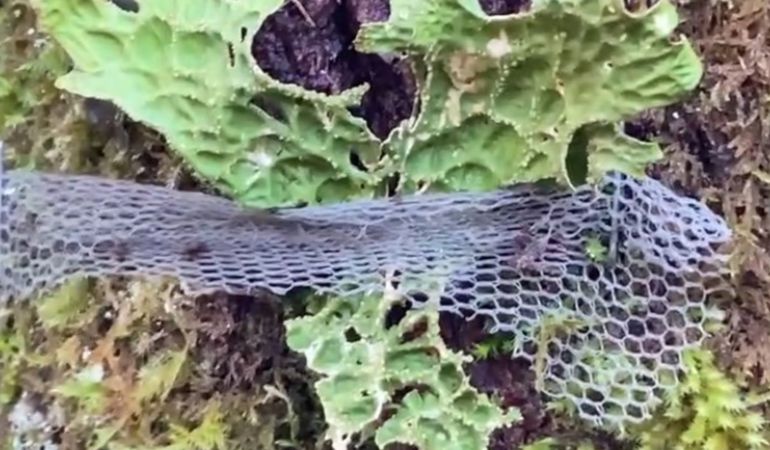Discovery of rare lichen in Carmarthenshire is welcome sign of environmental recovery during COP 16

As delegates from 196 countries meet at Cop 16 to discuss progress in preserving biodiversity, discovery of a rare lichen deep within the majestic Dinefwr Park, Carmarthenshire, is a welcome sign of environmental recovery.
Lobaria pulmonaria lichen – an endangered species in Europe – has been discovered on several trees within The Wildlife Trust of South & West Wales' Castle Woods Nature Reserve and National Trust’s Bog Woods.
This type of lichen was virtually wiped out in the UK during the Industrial Revolution and only survives where there is clean air, humid, and still conditions.
Only around 600 trees in Wales are known to have lobaria lichen on them, with there being around 40 sites across Wales holding just one or two trees with lobaria lichen.
The discovery of a tiny population at Dinefwr, the only population within Carmarthenshire, signifies it has has survived thanks to the clean air in that location and it being sheltered from airborne nutrients from agriculture.
National Trust, The Wildlife Trust of South & West Wales, and Natural Resources Wales (NRW) are working together on a conservation project to protect and nurture the lobaria lichen population found there, ensuring shelter where possible and attempting translocation of lichen to other parts of the forest to encourage its growth there.
This conservation project is an excellent example of work being carried out to fulfil NRW’s vision of people and nature thriving together.
Hayley Barrett, Environment Team Leader, NRW, said:
“I’m really proud of the team and the work they have been doing in the Dinefwr Estate, working with partners from the National Trust and The Wildlife Trust to preserve this charismatic species that tells a story or survival and restoration, as one of the few sites left in Wales of this wonderful species.
“It’s fantastic to see the lichen thriving on the trees that remain here and hopefully we will see it spread further under the sympathetic management that we’re undertaking here.”
Lobaria lichen had previously been spotted on ash trees in National Trust’s Bog Woods, but was more recently discovered on the oldest tree in Dinefwr known as the Castle Oak, which is estimated to be at least 800 years old.
Dai Hart, Countryside Manager for Carmarthenshire and Ceredigion, National Trust, said:
“Lobaria lichen has been observed on the largest and oldest oak we have on site. It was probably a sapling when the castle was constructed so it’s seen a lot of history and change in Dinefwr over the years.
“The fact that lobaria lichen exists on this ancient tree is really something quite special and I am delighted not only that the lichen has been found at Dinefwr, but also with the work being carried out to ensure it is given every opportunity to flourish here.”
It can also be found on a fallen ash tree in a section of the woods managed by The Wildlife Trust. This has become the donation site for the attempted translocation.
Rebecca Killa, Wildlife Trust Officer Carmarthenshire, said:
“The mature ash tree had been looking unhealthy for a number of years. For health and safety reasons we carried out remedial work on the tree but also tried to keep the tree upright to protect the lobaria lichen. When the tree eventually fell, we decided to use some of the lichen colony from the tree for translocation.”
Behind the fallen ash tree is a pocket of woods where lobaria lichen can be found in abundance and further on from that is the translocation site. Lichen leaves can be seen attached to a tree with squares of soft gauze, similar to the material of a fishnet stocking, and staples. The team hopes this will encourage growth of lichen.
Sam Bosanquet, Specialist Advisor: Bryophytes, Lichens & Fungi, NRW, said:
“It’s really exciting to see active conservation happening for lobaria lichen at Dinefwr. “Often we are trying to protect rare lichen species on their few remaining Welsh sites by preventing damage happening to them, but here we’re actually going one step further and doing something active and helping a species that is declining significantly.
“Now that lobaria lichen is occupying several trees in Dinefwr, if anything were to happen to the lichen on one tree, it will be able to survive on some of the rest.”
